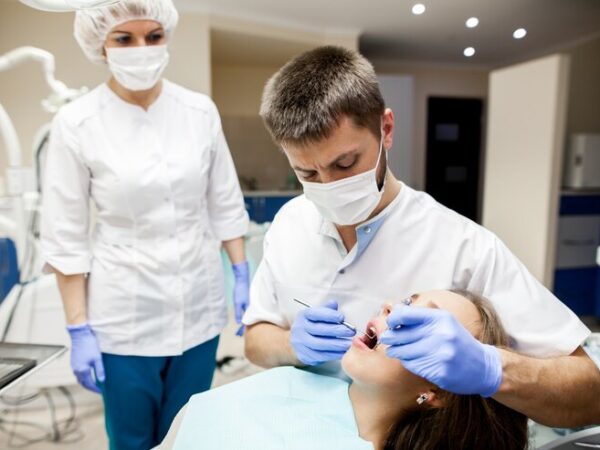Understanding Teeth Whitening Coverage
Does Dental Insurance Cover Teeth Whitening?
When considering the enhancement of your smile through teeth whitening, a common question arises: does insurance cover teeth whitening? The answer is not straightforward, as dental insurance plans often categorize teeth whitening as a cosmetic procedure, which is typically not covered. However, every insurance plan is different, and it’s crucial to review your specific policy details or consult with your insurance provider.
- Most dental insurance plans do not cover teeth whitening.
- It’s essential to check with your insurance provider for your plan’s details.
- Consulting with dental professionals can provide alternative solutions.
Understanding your insurance coverage can save you from unexpected expenses and help you explore other financing options if necessary. Dental professionals can also guide you through the process, offering insights into the cost-effectiveness of various teeth whitening methods.
Navigating Insurance Policies for Cosmetic Procedures
When considering teeth whitening, it’s crucial to understand that most dental insurance policies, including those from major carriers like Aetna, Blue Cross Blue Shield, and Cigna, typically exclude cosmetic procedures. This means that teeth whitening, often deemed a cosmetic enhancement, is not usually covered.
To navigate insurance policies effectively, start by reviewing the specifics of your plan. Look for any possible exceptions or allowances for cosmetic procedures. Some plans may offer partial coverage or discounts on such services through affiliated dental networks. Additionally, it’s important to check if your insurance has a ‘cosmetic rider’ that can be added to your policy for an additional fee, providing some coverage for cosmetic dentistry.
Here is a list of steps to take when exploring your insurance options for teeth whitening:
- Review your dental insurance policy’s terms and conditions.
- Contact your insurance provider to inquire about coverage for cosmetic procedures.
- Ask about the possibility of adding a cosmetic rider to your plan.
- Explore alternative financing options if teeth whitening is not covered.
Alternative Financing Options for Teeth Whitening
While dental insurance may not cover cosmetic procedures like teeth whitening, there are alternative financing options available to patients. Many dental practices offer payment plans that allow you to spread the cost of treatment over time, making it more manageable. Additionally, third-party financing companies provide loans specifically for healthcare services, which can include cosmetic dentistry.
Another option to consider is a Cosmetic Dentistry Grant (CDG) program. The application process for a CDG program is straightforward, with cosmetic treatments like implants, veneers, teeth whitening, Invisalign, and more. These grants can help cover a portion of the costs, reducing your out-of-pocket expenses.
Here’s a quick overview of some common financing alternatives:
- Payment plans offered by dental practices
- Healthcare credit cards like CareCredit
- Personal loans from banks or credit unions
- Cosmetic Dentistry Grants (CDG)
Before deciding on a financing option, it’s important to thoroughly understand the terms and conditions, including interest rates and repayment schedules. Consulting with your dental office’s financial coordinator can provide valuable guidance in choosing the best method to finance your teeth whitening procedure.
The Teeth Whitening Process Explained
What Is Teeth Whitening?
Teeth whitening is a cosmetic dental procedure aimed at enhancing the aesthetic appeal of one’s smile by removing surface stains and discoloration from the teeth. This process can significantly improve the brightness of teeth, contributing to a more confident and attractive smile.
The procedure typically involves the application of a whitening agent, such as hydrogen peroxide or carbamide peroxide. These agents work by penetrating the tooth enamel to break down and dissolve the compounds that cause staining, thereby restoring the teeth to a lighter color.
It’s important to note that while teeth whitening is effective for many, it may not be suitable for everyone. Factors such as the presence of dental restorations, individual oral health conditions, and the cause of tooth discoloration can influence the effectiveness and suitability of teeth whitening treatments.
How Does Teeth Whitening Work?
Teeth whitening is a transformative process that relies on the application of bleaching agents to the teeth. Hydrogen peroxide or carbamide peroxide are the most commonly used substances. These agents work by penetrating the tooth enamel and breaking down the stains that have accumulated over time, which results in a visibly whiter appearance.
The procedure can vary slightly depending on whether it is performed in a dental office or at home with a professional-grade kit. In-office treatments typically offer immediate and more pronounced results due to higher concentrations of whitening agents and the use of specialized lights or lasers to enhance the bleaching process.
For those considering teeth whitening, it’s important to understand that the treatment is most effective on natural tooth enamel and will not alter the color of dental restorations such as fillings, crowns, or veneers. Here’s a quick overview of the steps involved in a professional teeth whitening session:
- Preparation of the mouth and teeth to ensure safety and comfort.
- Application of the whitening agent to the teeth.
- Activation of the agent using light or laser, if applicable.
- Removal of the agent and cleaning of the teeth.
- Evaluation of the whitening results and planning any necessary follow-up treatments.
Safety and Risks of Teeth Whitening
Teeth whitening is generally considered a safe procedure when overseen by a dental professional. However, it’s important to be aware of the potential risks and safety concerns associated with teeth whitening treatments. For instance, while dental-grade whitening products are designed to minimize harm, overuse or misuse can lead to tooth sensitivity or damage to the enamel.
The safety of teeth whitening can also depend on the individual’s dental health and the presence of restorations such as fillings, crowns, or veneers. Pregnant women or individuals with certain dental conditions may be advised against teeth whitening procedures. It’s crucial to consult with a dental professional to assess whether teeth whitening is a suitable option.
Potential dangers of teeth whitening products, especially for younger individuals like teens, can be more pronounced due to the concentration of hydrogen peroxide or other bleaching agents. These risks underscore the importance of professional guidance and the use of products approved for safety by dental experts.
Teeth Whitening for Special Dental Conditions
Whitening with Fillings, Crowns, or Veneers
When considering teeth whitening, it’s important to understand that the procedure only works on natural tooth enamel. This means that fillings, crowns, or veneers will not respond to the whitening agents. As a result, patients with dental restorations may experience uneven whitening, where natural teeth become lighter while restorations retain their original color.
To achieve a uniform smile, dental professionals often recommend a two-step approach:
- Undergo the teeth whitening treatment to address the natural teeth.
- Replace the existing restorations to match the new shade of the whitened teeth.
This strategy ensures that all visible teeth have a consistent appearance, contributing to a more attractive smile. It’s essential to have a detailed discussion with your dentist about the best course of action, especially if you have multiple restorations or restorations in prominent areas.
Who Is a Candidate for Teeth Whitening?
Identifying the right candidates for teeth whitening is crucial for both safety and effectiveness. Most adults with healthy, unrestored teeth and gums are considered good candidates. However, there are exceptions, such as individuals with dental restorations, pregnant women, or those with specific dental conditions.
Before proceeding with teeth whitening, a professional consultation is advised to assess suitability. During this consultation, the dentist will evaluate factors such as the presence of fillings, crowns, or veneers, as these restorations will not respond to whitening treatments. For those with restorations, alternative options to achieve a uniform smile may be discussed.
To ensure the best outcome, maintaining good oral hygiene and regular dental visits are recommended post-treatment. Touch-up treatments may also be necessary to preserve the whiteness of your smile over time.
Addressing Sensitivity After Teeth Whitening
It’s not uncommon for patients to experience temporary tooth sensitivity after a whitening treatment. This discomfort is typically mild and should diminish within a few days. To manage sensitivity, consider the following tips:
- Use a toothpaste specifically formulated for sensitive teeth.
- Avoid extreme temperatures in foods and beverages, as they can exacerbate sensitivity.
- If discomfort persists, consult with your dental professional for additional advice and potential treatments.
Remember, while teeth whitening doesn’t damage enamel, the process can temporarily make teeth more sensitive to temperature changes. Following your dentist’s aftercare instructions can help minimize any discomfort and maintain the results of your whitening treatment.
Cost Considerations for Teeth Whitening
How Much Does Teeth Whitening Cost?
The cost of teeth whitening can vary widely, influenced by factors such as the method chosen and the location of the dental practice. Generally, there are two primary types of whitening procedures: in-office and at-home treatments. In-office whitening is performed by dental professionals and typically offers immediate and noticeable results, but it comes at a higher price point. At-home kits provided by a dentist can be a more affordable alternative, though they may require a longer time to achieve similar results.
To give you a clearer idea of potential expenses, here’s a simplified cost breakdown:
- In-office teeth whitening: $300 – $800
- At-home teeth whitening kits: $100 – $400
Remember, these figures are estimates and actual costs can differ based on your specific circumstances. It’s also important to consider that while some dental practices offer financing options, teeth whitening is often not covered by insurance as it is deemed a cosmetic procedure. Therefore, patients should be prepared for out-of-pocket expenses. Maintaining the results over time will involve additional costs, such as for touch-up treatments and avoiding stain-causing habits.
Insurance vs. Out-of-Pocket Expenses
When considering teeth whitening, it’s essential to understand the financial implications of insurance coverage versus out-of-pocket expenses. Most dental insurance plans do not cover teeth whitening, as it is often categorized as a cosmetic procedure. However, there are exceptions, and a handful of dental insurance companies may offer coverage for such treatments under specific policies.
To navigate this landscape, here’s a list of insurance companies that have been known to provide some level of teeth whitening coverage:
- Assurant Employee Benefits
- Blue Cross Blue Shield
- Cigna
- Delta Dental
- Guardian
- Humana
- MetLife
- UnitedHealthcare
It’s important to directly contact your insurance provider to confirm whether your plan includes teeth whitening. Additionally, comparing the costs covered by insurance with the full price of the procedure can help you make an informed decision. If your insurance does not cover teeth whitening, or if the coverage is insufficient, you may need to consider alternative financing options or be prepared to pay out-of-pocket.
Maintaining Your Investment in a Whiter Smile
After achieving the desired level of teeth whitening, it’s crucial to maintain the brightness of your smile. To do this, certain lifestyle adjustments and oral hygiene practices are recommended. Here are some tips to help you preserve your newly whitened teeth:
- Avoid stain-causing foods and beverages, such as coffee, red wine, and dark berries.
- Use whitening toothpaste that contains whitening agents to help combat daily staining.
- Practice good oral hygiene by brushing and flossing daily, which is essential for removing plaque and surface stains.
- Schedule regular dental check-ups and cleanings to maintain overall oral health and address any new stains or dental issues.
Additionally, touch-up treatments may be necessary over time to keep your smile bright. These can be performed at home with professional-grade products or in a dental office for immediate results. Remember, maintaining good oral hygiene practices at home is key to preserving your oral health and the results of your teeth whitening treatment.
Emergency Dentistry and Teeth Whitening
Does Insurance Cover Emergency Dental Care?
When faced with a dental emergency, understanding your insurance coverage is crucial. Many dental insurance plans include emergency care, but the specifics can vary significantly. It’s essential to review your policy or speak with your insurance provider to clarify the extent of your emergency dental coverage. Additionally, dental offices often have knowledgeable staff who can assist with insurance queries and explain your options.
The cost of emergency dental care is not uniform; it fluctuates based on the emergency’s nature and severity. Some dental practices, like Cedar Park Dental & Braces, strive to offer affordable emergency care and may provide alternative payment plans or membership savings programs to help manage these unexpected expenses.
In the event of a dental emergency, such as severe pain, swelling, or trauma, immediate action is necessary. Over-the-counter pain relievers and cold compresses can offer temporary relief, but it’s imperative to seek professional dental care promptly to address the issue and prevent further complications.
Immediate Steps in a Dental Emergency
When faced with a dental emergency, taking the right actions swiftly is crucial. Contact a dentist immediately, such as your local dentist in Tustin, to get advice on the necessary steps and to schedule an urgent appointment. Here are some immediate measures you can take:
- Rinse your mouth with warm water to clean the affected area.
- If there’s debris lodged between your teeth, floss gently to remove it.
- Apply a cold compress on the outside of your cheek to help reduce swelling and alleviate pain.
Remember, in cases like a knocked-out tooth, time is critical. Acting quickly can make the difference between saving and losing a tooth. While waiting for your emergency appointment, managing pain is essential. Over-the-counter pain relievers can provide temporary relief, but it’s important to follow the guidance provided by your dentist Tustin.
Teeth Whitening as Part of Emergency Care?
In the realm of emergency dentistry, the primary focus is on addressing acute pain, trauma, and infections. However, some urgent care dental practices may offer cosmetic services, such as teeth whitening, once the immediate concerns are resolved. For instance, an emergency dentist in Tustin might provide teeth whitening treatments as part of the comprehensive care, especially if the patient’s situation allows for additional non-emergency procedures.
While not typically associated with emergency dental care, teeth whitening can be a convenient add-on service for patients already visiting for urgent issues. It’s important to note that such services are usually not covered by insurance in an emergency context and are considered elective.
Here’s a brief overview of what to expect if you opt for teeth whitening at an urgent care dental practice:
- Consultation to ensure suitability for the procedure
- Immediate in-office whitening for quick results
- Availability of professional take-home whitening kits
Remember, the availability of teeth whitening in an emergency setting will vary by practice and should be discussed with your dental care provider.













